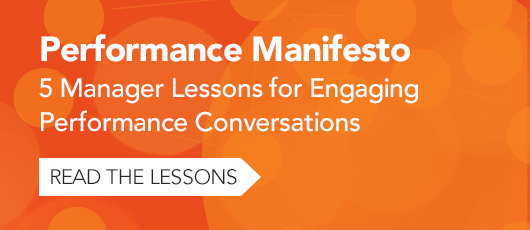How to Reduce Bias in Performance Reviews: 4 Tips for Managers

By now, most of us have heard the terms “unconscious bias” or “conscious bias”. Ultimately, humans are prone to bias by nature—there’s no escaping it. Though many strive to treat everyone fairly, our brains are wired to find mental shortcuts that make processing the world around us easier.
While these shortcuts often lead to inaccurate conclusions, there are key things we can all do to be better.
Think about this: if a high-performing employee arrives late for a meeting, you might be likely to excuse their tardiness due to something out of their control, such as an unexpected technical issue.
Whereas if an employee with mediocre performance joins late, you might assume they overslept or exercised poor time management. You subconsciously make quick judgments based on previous experiences and act accordingly.
Bias may be a part of being human, but it can have damaging effects in the workplace. It’s especially important for managers to consider how bias might impact employee feedback conversations and performance reviews.
In this article we’ll share 4 ways to reduce personal bias in employee performance reviews.
4 ways to reduce bias in employee performance reviews
1. Become self-aware.
Biologically, complete objectivity is difficult, if not impossible. Acknowledging this fact makes you more open to recognizing biases when they arise and more mindful of your thoughts and actions.
There are a number of free assessments you can take online to identify your unconscious biases. There are also personality assessments that help you identify where you might have strengths and weaknesses in how you work with others. Take one to become more aware of your personal biases and opportunities for growth.
2. Meet with employees frequently.
If you rely on annual or semi-annual performance conversations, recency bias may take over and you may not have a comprehensive, accurate view of employee performance. Continuously interacting and staying up to date with employees paints a clearer picture that tells the whole story.
We recommend conducting frequent (monthly or even weekly) one-on-one meetings with employees. Not only will you build a trusting relationship and ensure alignment, but you’ll also get continual updates on employee goals, perceptions, roadblocks, successes, and more.
Consider leveraging a one-on-one meeting template to build a shared agenda, capture key insights, and take notes during or after the conversation that can be referenced later. Documenting these ongoing conversations can help combat recency bias and inject objectivity into your performance appraisals.
3. Build your perception of employee performance from the ground up.
At this point, you likely have set opinions about employees (e.g., disengaged, productive, collaborative, or unmotivated), but people are constantly changing. Your perceptions of employee performance should evolve at the same speed.
Managers should get to know their people on a personal level. If you know the deep underlying motives, strengths, and personal histories of your team, you are less likely to rely on surface level characteristics which can create biases.
Reframe before jumping into feedback and evaluation mode. Continually review progress on goals, source feedback from other team members, and consider the progress the employee has shown since your last 1-on-1.
4. Gain insight from other employee voices and data.
Busy managers may not interact with employees as often as their coworkers do, and these voices can provide valuable insight when evaluating employees. Sourcing feedback from other team members (or customers, if applicable) gives more context and helps eliminate the Halo Effect and similarity bias.
One of the best ways to combat bias is to have data to disprove your intuitions. Identify the KPIs for your team in all areas of collaboration, teamwork, engagement, productivity, and OCBs (organizational citizenship behaviors). Use data to make decisions instead of biases or heuristics.
Following these steps won’t erase your biases, but they can reduce them. In order to create a workplace that fosters trust and mutual respect, you need to proactively try to bury your biases and approach employee performance with an open mind.
To learn more tips on reducing bias in your next employee performance review, download our free ebook, Performance Manifesto: 5 Manager Lessons for Engaging Performance Conversations.







